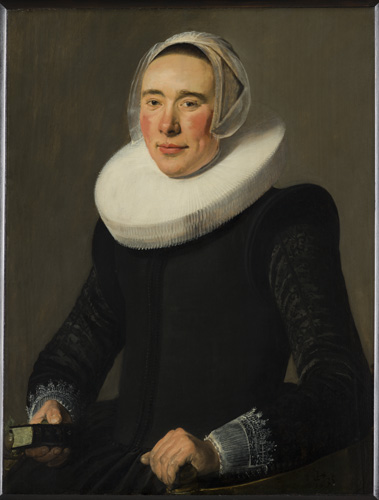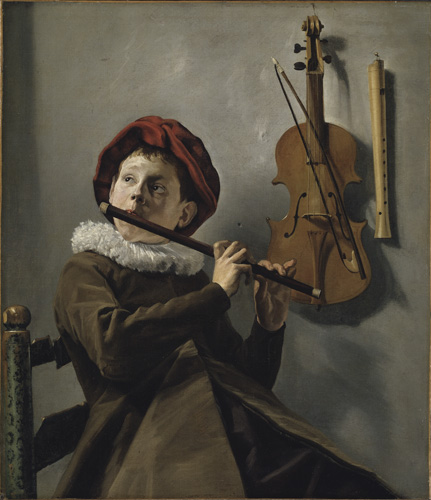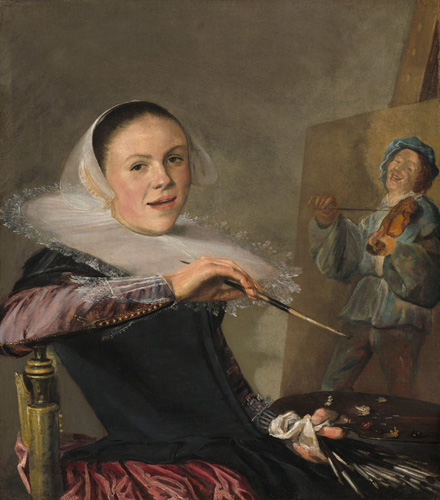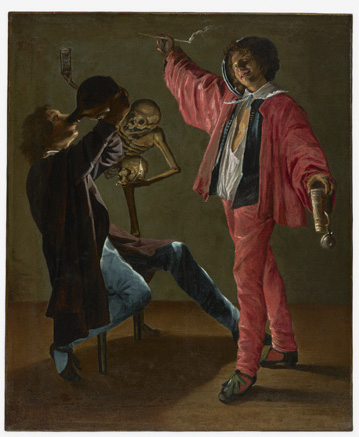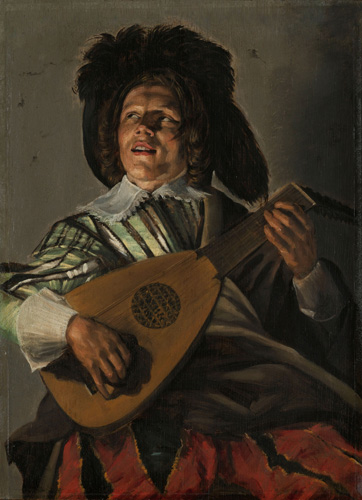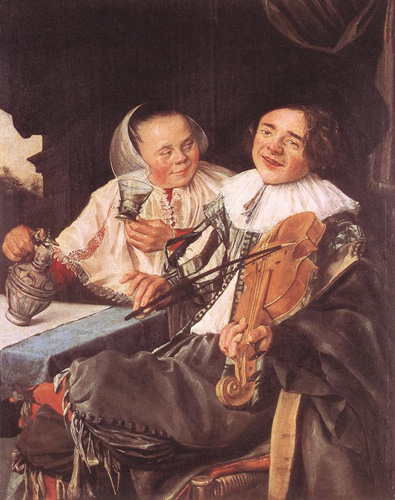Judith Leyster
Active in: The Netherlands
Biography
A professional painter, Judith Leyster was active during the Dutch Golden Age. She was born to a middle-class family in Haarlem in 1609. Her training is not well-documented, but it is widely accepted that she had some affiliation with the workshop of Frans Hals in the mid- to late-1620s.
In 1633, Leyster became the first woman to join the Haarlem Guild of Saint Luke. Her works are often signed with her monogram, with a star as a reference to her family name, “Leyster,” which translates to “leading star.” In 1636 she married fellow painter Jan Miense Molenaer. Leyster’s artistic output seems to have lessened following her marriage and the birth of her children, and the content of her work seems to have changed as well. Early in her career, she specialized in genre scenes, but her later works are primarily flower pieces.
Despite the impact of her family life on her professional career, Leyster was a respected and renowned painter in Haarlem during her own lifetime. Following her death, her artistic contribution was vastly overshadowed by that of Frans Hals until her rediscovery in the 1890s. In 1893, the Louvre found Leyster’s monogram under the forged signature of Frans Hals on a painting now known as Carousing Couple.
Selected Works
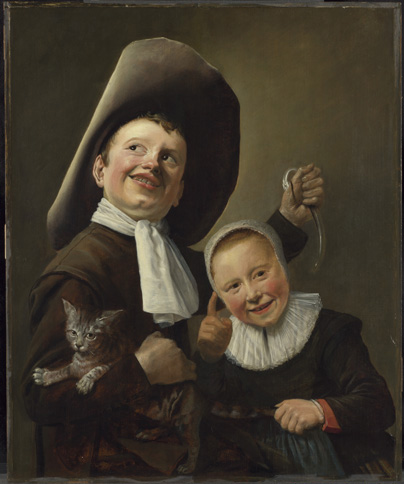
Judith Leyster, A Boy and a Girl with a Cat and an Eel, ca. 1635. Oil on oak panel, 59.4 x 48.8 cm. National Gallery, London
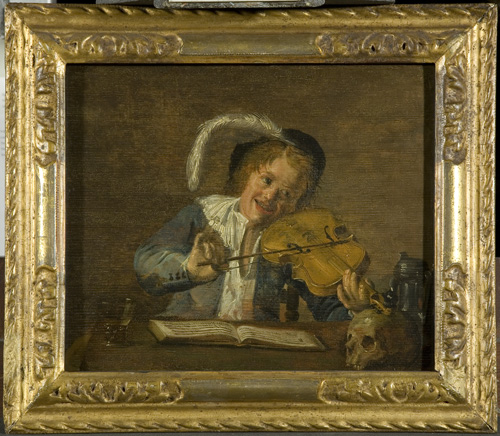
Judith Leyster, A Boy Musician, n.d. Oil on oak panel, 27.6 x 32 cm. Bristol Museum and Art Gallery, K1343
Circle
Wife of
Jan Miense Molenaer
Possible student of
Frans Hals
Bibliography
Ampzing, Samuel. Beschryvinge ende lof der stad Haerlem in Holland. Haarlem, 1628.
Borzello, Frances. Seeing Ourselves: Women’s Self-Portraits. New York: Harry Abrams, 1998.
Bredius, Abraham. “Een conflict tusschen Frans Hals en Judith Leyster.” Oud Holland 39 (1917): 7–73.
Cook, Nicole Elizabeth. “By Candlelight: Uncovering Early Modern Women’s Creative Uses of Night.” In Women Artists and Patrons in the Netherlands, 1500–1700. Edited by Elizabeth Sutton, 55–84. Amsterdam: Amsterdam University Press, 2019.
Dubiez, F. J. “Het schildersechtpaar Judith Leyster en Jan Miense Molenaer in Amsterdam.” Ons Amsterdam 8 (1956): 142–44.
Fine, Elsa Honig. Women & Art: A History of Women Painters and Sculptors from the Renaissance to the 20th Century. London: Allanheld & Schram, 1978.
Gratama, G. D. “Het Portret van Judith Leyster door Frans Hals.” Oud Holland 47 (1930): 71–75.
Greer, Germaine. The Obstacle Race: The Fortunes of Women Painters and Their Work. New York: Farrar, Straus, Giroux, 1979.
Harms, Juliane. “Judith Leyster: Ihr Leben und ihr Werk.” Oud Holland 49 (1972): 88–96, 112–26, 145–54, 221–42, 275–79.
Heller, Nancy G. Women Artists: An Illustrated History. New York and London: Abbeville, 2003.
Hofrichter, Frima Fox. “Games People Play: Judith Leyster’s A Game of Tric-trac.” Worcester Art Museum Journal 7 (1985): 19–27.
Hofrichter, Frima Fox. Judith Leyster: A Woman Painter in Holland’s Golden Age. Doornspijk: Davaco, 1989.
Hofrichter, Frima Fox. ‘Judith Lyester’s Self-portrait: Ut picture poesis,’ Essays in Northern European Art Presented to Egbert Haverkamp-Begemann on his 60th Birthday. Doornspijk, 1983.
Hofrichter, Frima Fox. “Leyster, Judith.” Grove Art Online, 2003. http://www.oxfordartonline.com.proxyiub.uits.iu.edu/groveart/view/10.1093/gao/9781884446054.001.0001/oao-9781884446054-e-7000050810.
Hofstede de Groot, C. “Judith Leyster.” Jahrbuch der preussischen Kunstsammlungen 14 (1893): 190–98, 232.
“Judith Leyster.” National Museum of Women in the Arts. nmwa.org/explore/artist-profiles/judith-leyster.
“Leyster, Judith.” Benezit Dictionary of Artists, 2011. http://www.oxfordartonline.com.proxyiub.uits.iu.edu/benezit/view/10.1093/benz/9780199773787.001.0001/acref-9780199773787-e-00109143.
Neurdenburg, Elisabeth. “Judith Leyster.” Oud Holland 46 (1929): 27–30.
Quinn, Bridget. Broad Strokes: 15 Women Who Made Art and Made History (In That Order). San Francisco: Chronicle Books, 2017.
Parker, Rozsika, and Griselda Pollock. Old Mistresses: Women, Art and Ideology. London: Routledge & Kegan Paul, 1981.
Petersen, Karen, and J. J. Wilson. Women Artists: Recognition and Reappraisal from the Early Middle Ages to the Twentieth Century. New York, 1976.
Schrevel, Theodore. Harlemum. Haarlem, 1647.
Thieme, Ulrich, and Felix Becker. Allgemeines Lexikon der bildenden Künstler: von der Antike bis zur Gegenwart. Leipzig: Seemann, 1907–50.
Tietze-Conrat, E. “Die Kunst der Frau.” Zeitschrift für Bildende Kunst (1911): 146–48.
Van Emden, Frieda. “Judith Leyster: A Female Frans Hals.” The Art World 3 (1918): 501–03.
Von Schneider, A. “Gerard Honthorst and Judith Leyster.” Oud Holland 40 (1922): 169–73.
Weidemann, Christianne, Petra Larass, and Melanie Klier. 50 Women Artists You Should Know. Munich: Prestel, 2016.
Welu, James A., and P. Biesboer. Judith Leyster: A Dutch Master and Her World. New Haven: Yale University Press, 1993.
Wheelock, Arthur K. “Judith Leyster.” National Gallery of Art, 2014. www.nga.gov/collection/artist-info.1485.html#biography.
Wisener -Hanks, Merry E. Women and Gender in Early Modern Europe. 4th ed. Cambridge: Cambridge University Press, 2019.
Wijnman, H. F. “Het geboortejaar van Judith Leyster.” Oud Holland 49 (1932): 62–65.
Entry Notes
Contributions to timeline and bibliography provided by Indiana University A300 student
